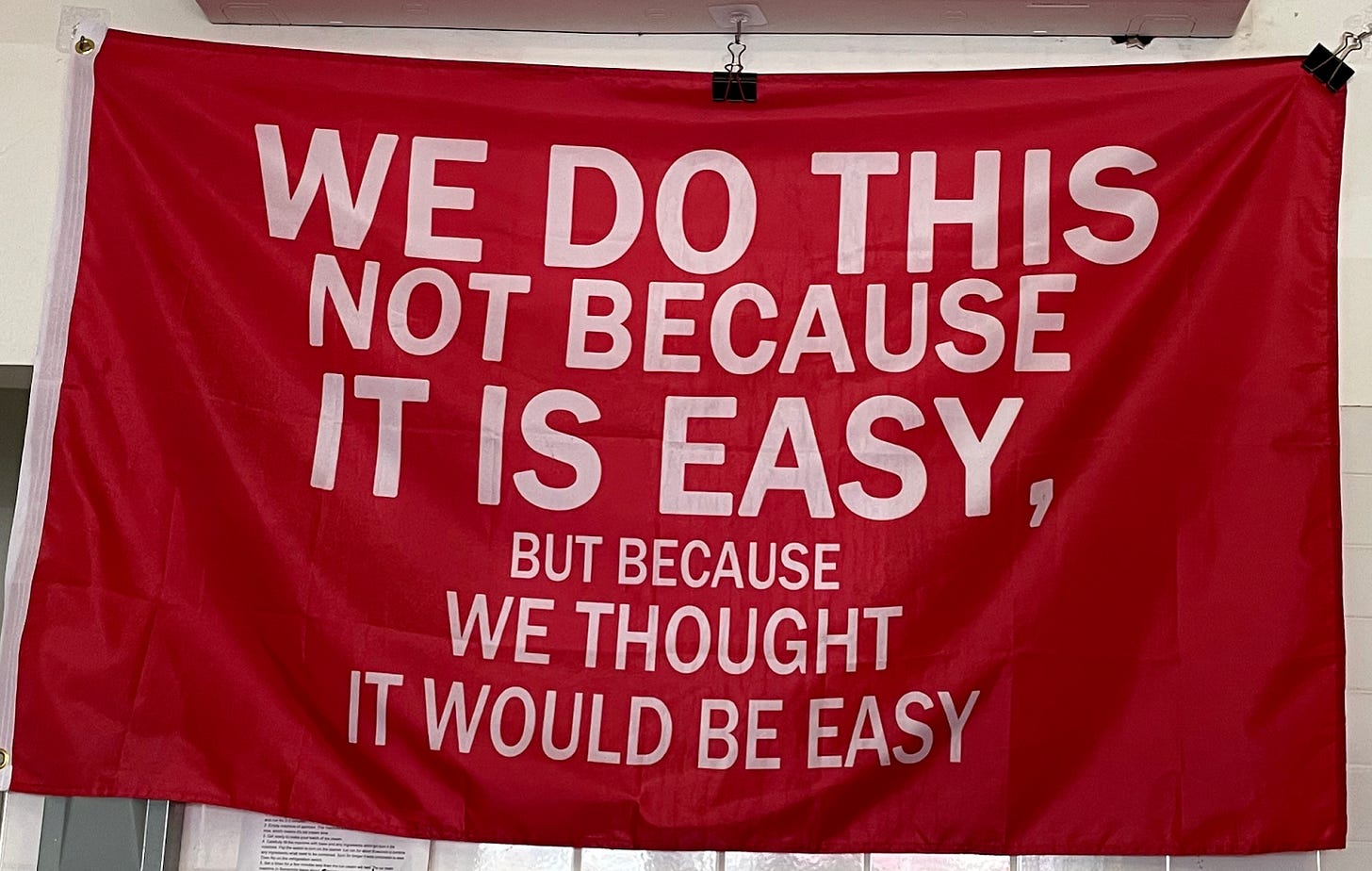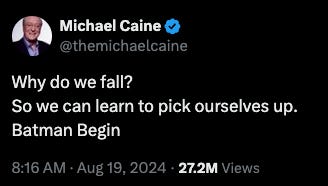Avoiding Common Traps While Building
To be forewarned is forearmed

Last post we dove into the Fixer’s Dilemma, what to do when the company you are attempting to “fix” never actually worked in the first place. The answer, of course, is to build it! Building, in company terms, is the creative assembly of people, ideas, resources and technology in pursuit of achieving a durable, specific capability that is valuable to a customer: usually margin + mission. Most new companies attempt a combination of improving what exists today (faster, better, cheaper, more reliable, durable, widely distributed) while some are bold enough to attempt inventing a whole new way of working. Building can be exciting, liberating, thrilling, and… exceptionally challenging. As a sobering reminder, 50% of businesses fail in their first 5 years. Despite that optimistic statistic, remember that everything that is, had to be built by someone. As you set out on the builder’s path, the Schutzblog dedicated to building from scratch. For today, let’s focus on two opposing traps that you must navigate on your way to success while building. Fun fact, Charybdis, the whirlpool, was supposedly near my maternal ancestral home of Messina, Sicily.
The Greenfield fallacy: not strict enough
Efficiency before effectiveness: too strict!
The Greenfield Fallacy
The Greenfield is a hypothetical set of initial conditions that you’ve convinced yourself is entirely free from constraints, limitations or problems of any kind. The contrast would be a yucky, messy, polluted, problematic brownfield (also known as current reality). Greenfield thinking is incredibly useful while building as it allows you to construct a compelling vision of a better future. This vision can drive your decision making, help you persist through adversity, and recruit others to join your mission. Furthermore, backloading constraints helps you separate the persistent, fundamental problems you are trying to solve from transitory problems resulting from the limitation of current solutions. For example, for the foreseeable future, we will need to allocate and distribute health care resources amongst people. The amount and type of care, number and acuity of recipients, and allocation schemes may change, but even in a world of infinite care we still have to get the right care to everybody in time. So today’s solution of fee-for-service physician billing may be dumb, but imagining a world without any distribution and allocation of resources is probably dumber.
This nuance opens the door to the Greenfield fallacy: the belief that in some future state, ALL, problems of the current state will cease to exist because of (your) ingenuity. Rather, recognizing that SOME won’t exist and the implied opportunity comprises the core of your unfair advantage. We are all susceptible to the Greenfield fallacy, a form of the Dunning-Kreuger effect. It is so alluring, to romanticize the unbuilt as having none of the dirty, picayune problems of your current reality. If you just build it right this time, you can be free of “pain, uncertainty, and the need for constant work.” While this fantasy can be helpful to get you going, you are likely to find an inverse Pirsig: the only problems you will find in the Greenfield are the problems you bring with you.
Oou begin to inhabit the world you’ve imagined, reality will immediately crash upon you. The supposed benefits of the new world “we will control everything!” also mean you have to DO everything. You will quickly see how valid your assumptions about growth or pace of development play out in the real world. And, despite your best efforts, you will discover all sorts of unanticipated (by you) problems and constraints, about which you were probably warned. Learn to love these constraints. They teach you where to focus your limited attention AND when you conquer them, let you know that you’ve actually achieved something. Once you accept that there will always be a constraint, working to expand them is the process of creation. But don’t be too hard on yourself, or you will end up in the opposite trap: efficiency before effectiveness.
Efficiency before Effectiveness
The measure of anything you build is its effectiveness: the business does what it is supposed to do, based on the strategy you set to hit your goals (you did that, right?). Another seemingly important measure is the efficiency with which you achieve your goals, i.e., doing so with minimum waste. Another way this shows up is worrying prematurely about scale. This pressure to avoid waste by getting it right the first time never abates, exacerbated by scarcity: money, investor patience, customer depth, regulatory tolerances, etc. Managing this tension is the difference between playing to win (effectiveness) and playing not to lose (efficiency).
On its face the obsession with early efficiency is absurd. How could you possibly be expected to efficiently do something that you haven’t done before, and maybe no one has? The desire for efficiency is usually well intended but can mask all sorts of fears about failure in an impossible situation. Let go, lower your expectations, and focus on what you are trying to achieve RATHER than what you’d like to avoid, which robs you of action velocity and slows your learning from feedback. To learn you must do something and then pay attention to what happens. You learn very little by doing nothing. If you can’t get over the guilt of “waste,” just remember that in the process of building a building, we build scaffolding, a whole other building that we eventually break down and throw away. How is that efficient?
Please don’t interpret this advice as a license for wasteful burning of resources (huge mistake, see companies failing above), rather, focus on disciplined learning through iteration over avoidant fear: stating and testing hypotheses about the ever-changing reality in which you exist. From these hypotheses you can generate models of cause and effect, the building blocks of any operation. As you do this, you will experience your work as a series of discovering and then busting through one constraint after another, which can sometimes feel like falling forward in circles.
No one said that this building thing would be easy, but maybe now you are a little wiser, a little bolder and more confident in your journey forward, disabused of fantasies of good OR terrible things that will happen. Good and terrible things will happen, just not the ones you can imagine. But fear not, roll up your sleeves and dig into the challenges at hand. Everything we have today, had to be invented, then optimized and built. You are joining in the act of creativity, one of the greatest of human endeavors.




